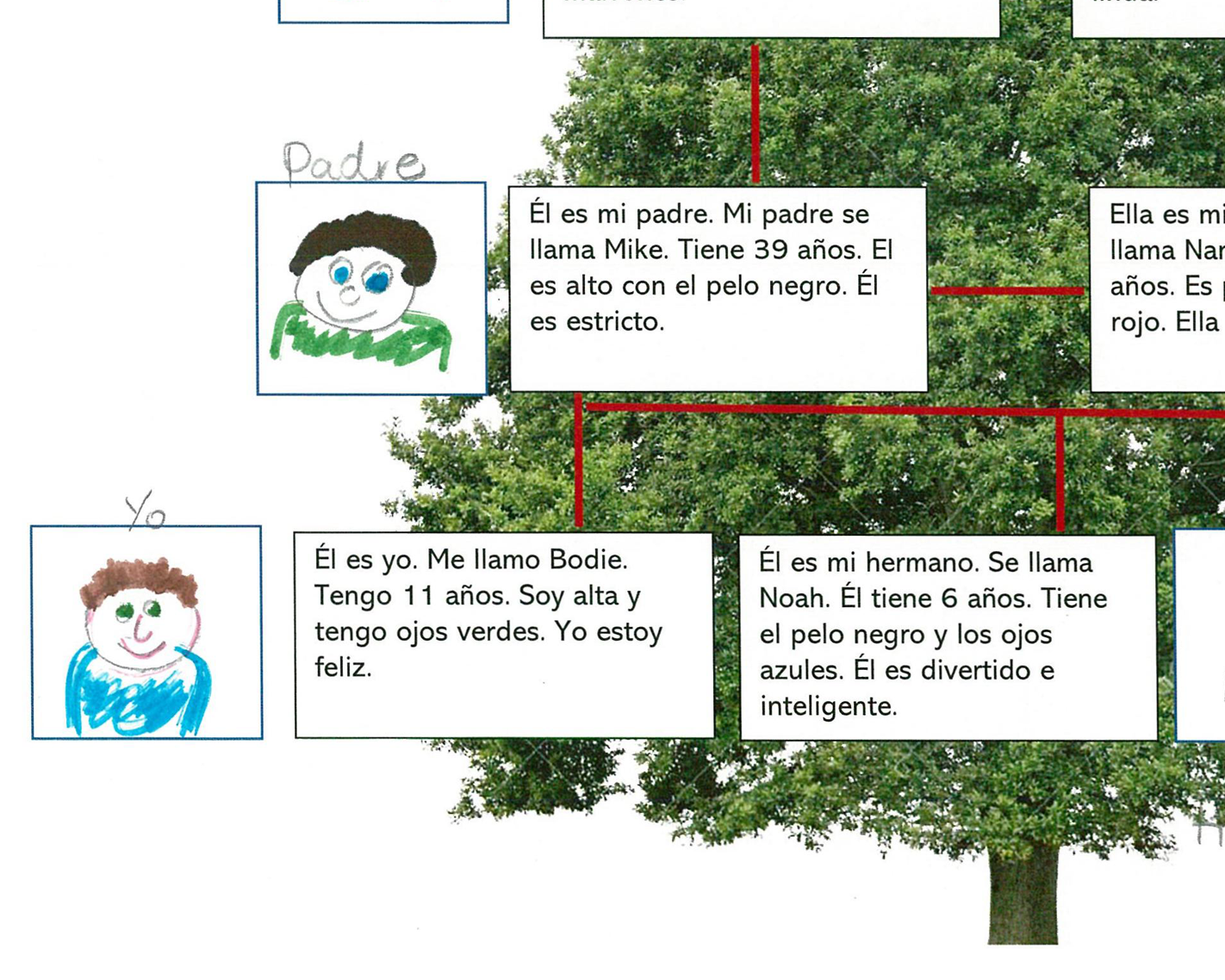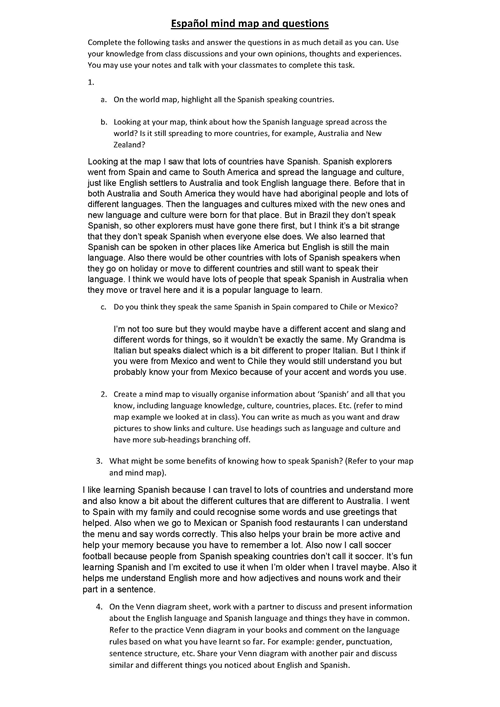Languages: Spanish - Satisfactory - Years 5 and 6
Portfolio summary
This portfolio of student work shows that the student uses written and spoken Spanish for classroom interactions, to carry out transactions and to share information about personal interests (WS5), relate experiences and express feelings (WS1, WS2). The student uses modelled sentence structures (WS1, WS5) to ask and respond to questions (WS2), seek clarification and give advice. When interacting, the student uses appropriate pronunciation of Spanish-specific sounds such as ci/ca and ga/gi, and intonation patterns. The student gathers information (WS3) relating to language and culture and presents it in different formats (WS4). The student describes characters (WS2, WS3), experiences and ideas encountered in texts, and creates short imaginative texts using structured models and descriptive and expressive vocabulary (WS1, WS2, WS3). The student uses regular and common irregular verbs in present tense (WS3, WS5), simple past tense and near future (WS1, WS2). The student uses pronouns (WS2, WS5), prepositions, adverbs (WS3), agreement of nouns and adjectives (WS2, WS3), and adverbs to mark time and place (WS1). The student applies rules of punctuation such as question and exclamation marks and accents (WS1, WS2, WS3, WS5). The student translates and interprets short texts (WS3, WS5, WS6), identifying aspects of the Spanish language and culture that are similar or different to their own and creates bilingual texts for the classroom and school community (WS3, WS6). The student describes their own experiences of using Spanish and identifies ways in which learning and using Spanish may impact on their own identity (WS4).
The student knows that Spanish has its own rules for pronunciation and grammar and that language use must be adjusted to suit different contexts, situations and relationships (WS4, WS6). The student uses metalanguage to explain basic features of language, texts and grammar, making connections with English terms they are familiar with such as ‘verb’, ‘adverb’, ‘noun’ and ‘agreement’ (WS4, WS6). The student identifies Spanish as a global language and describes the distribution of communities of Spanish speakers in different countries and regions (WS4, WS6). The student identifies ways that languages change through contact with other languages and due to new technologies, and gives examples of Spanish words used in English and words used in Spanish that are borrowed from other languages (WS4, WS6). The student reflects on the language they use at home, at school and in the community and identifies how young Spanish speakers would use language in the same contexts (WS4, WS6).





